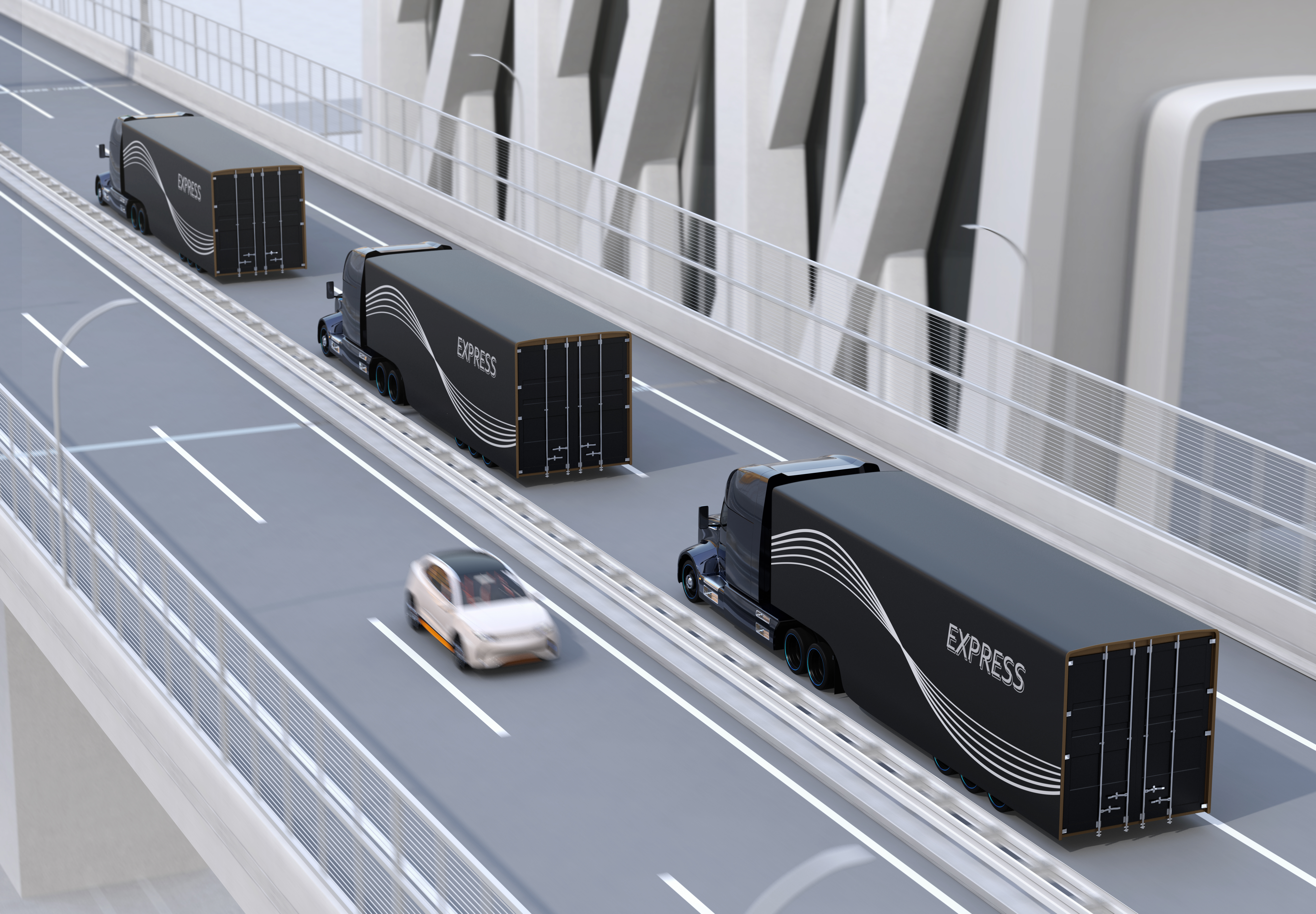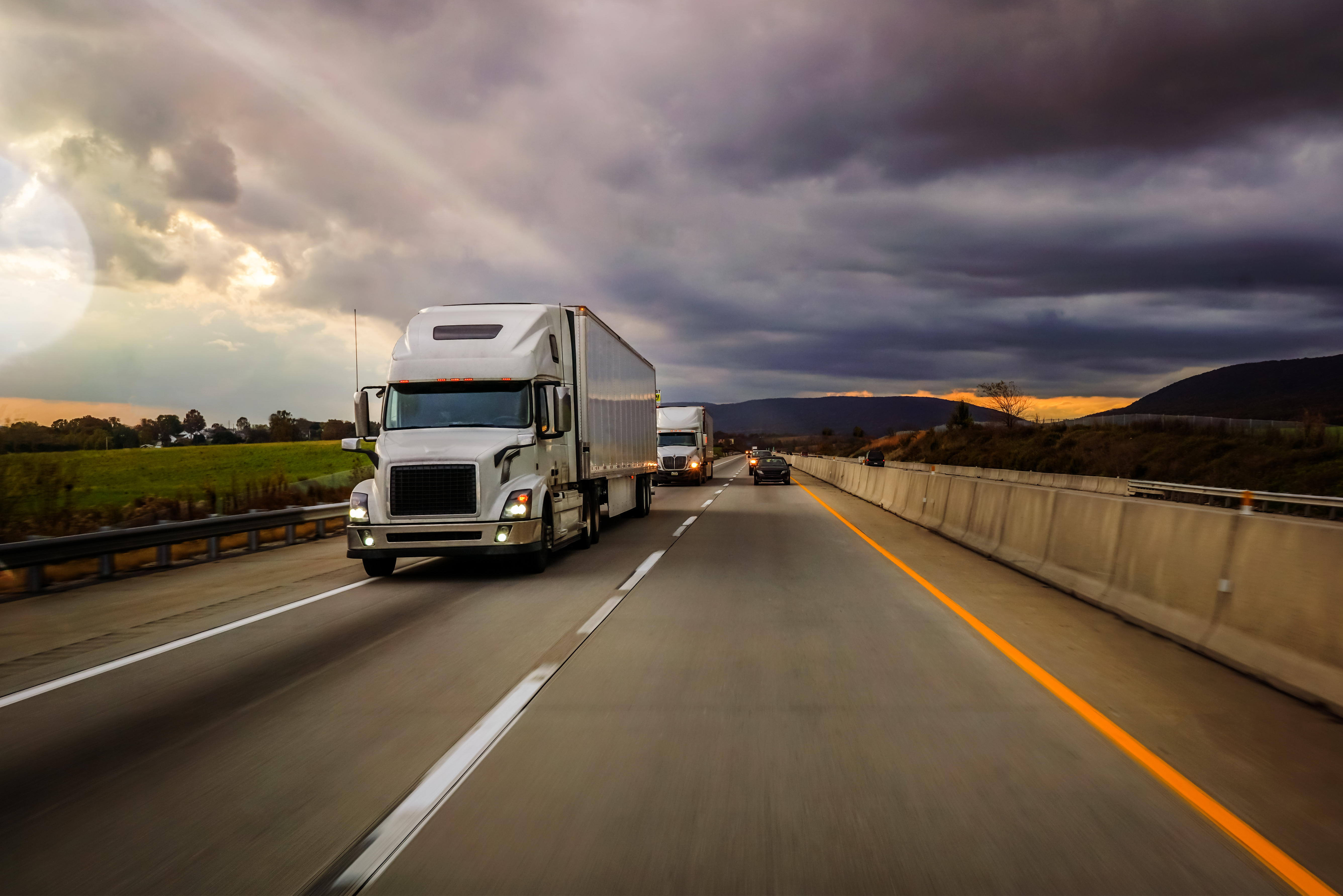
Truck platooning means a number of trucks equipped with advanced driving support systems that move in a group or platoon. These trucks are driven by modern technology and connect with one another using smart devices. The sensor such as radar and cameras enable all of the vehicles in the group to communicate with each other. It allows platooning vehicles to automatically increase speed together, brake together and enables them to maintain a closer distance than is typically achievable with unlinked vehicles. The driver of the first truck leads the platoon and navigates the route.
Truck platooning is creating new opportunities for the global transport sector. Autonomous vehicles and platooning are the keystones of future transport systems. Truck platooning can effectively help to develop a strong transport system by making roads safer, cleaner and more efficient in the coming years. Because of this, many truck manufacturers are eager to bring these platoons to the roads of low to middle countries.
Platooning is one of the most crucial steps in truck automation, which is expected to increase fuel efficiency and safety for commercial vehicles. As platooning technology improves, there may only be a lead driver or no human drivers at all.
Benefits of Truck Platooning
Truck Platooning offers many environmental and societal benefits. Have a look-
- Truck platooning can effectively reduce CO2 emissions by up to 8% from the lead vehicle and 16% from the following vehicles. As per European Truck Platooning, it efficiently increases traffic flows and therefore reducing tail-backs.
- The technology decreases fuel consumption. In platooning, the trucks can drive closer together and thereby the air-drag friction can be reduced significantly.
- In truck platooning, the braking is automatic and immediate. The trucks following the lead truck only require one-fifth of the time a human driver would need to react. Thus, platooning improves safety.
- Platooning technology enables drivers to do other tasks, such as administrative work or making or answering calls.
- With more analytical and predictive driving of trucks on the roads, platooning also enhances safety for other road users.
- Truck platooning uses the roads more effectively that help in faster goods delivery and reducing traffic jams. Consequently, it enables the supply chain and transport system to be optimised.
- This technology has the potential to improve energy efficiency and reduce costs for businesses and consumers.
Platooning Can Save Up To 7% Truck Fuel!
Truck platooning is a cost saver. As the trucks driving close together at a uniform acceleration, the lead truck cuts through the air and decreases the amount of air striking the front of, and flowing between the following trucks. The vehicles traveling closer together at constant speeds improve traffic flow on the roads and increase the efficiency of delivering consignments. The decreased aerodynamic drag on all of the vehicles in the group means that the trucks consume less fuel that ultimately reduces operating costs.
In truck platooning, trucks communicate with each other maintaining two seconds ‘distance’ between them, consuming 5 % less fuel. One second ‘distance’ will save at least 7 % fuel, Scania (a global leading provider of transport solution) says.
Truck Platooning Technology To Benefit Transporters In The Transportation Industry!
Platoons have the potential to make the logistics process smooth and more efficient. Platooning technology is a cost-saver because lower fuel consumption means lower fuel costs which presently are the 30% of overall truck operating costs.
Due to the ultra-fast communication, it can be ensured that the following truck can react twenty times faster than the normal driver. For this reason, the distance between vehicles can be reduced which will improve fuel efficiency as well as safety. More than 90% of accidents across the world, happening in traffic is the result of human error. Thus, relying on technology that drivers can be much safer.
Increased road safety, efficient use of infrastructure, reduced operational cost and less road congestion are the key benefits of truck platooning that help in meeting several challenges which are currently experienced by the road freight transport sector and society as a whole.

Author’s Biography
Rachelle, the author of this post is an experienced writer and analyst. He is working in the transport and logistics industry for many years and therefore familiar with the latest trends and technologies used in this sector. Writing is his passion and he writes informative blogs after the complete research and analysis.
